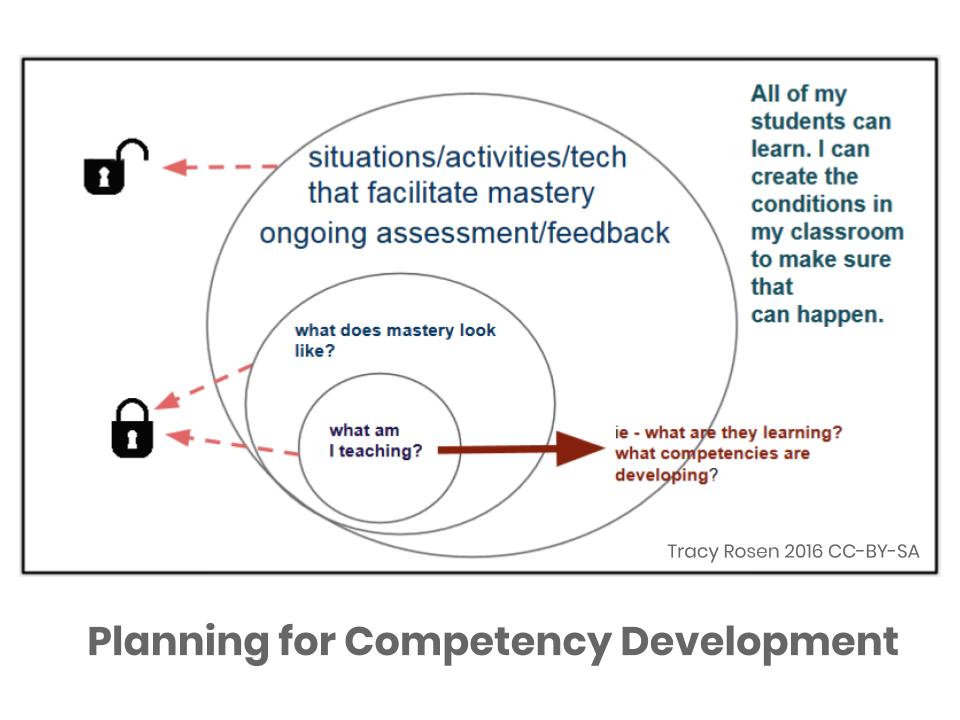Questions for Reflection:
Have you thought about how learning situations may impact classroom design?
How is your classroom already flexible?
Does the design of your classroom allow for students to access information easily?
How do flexible learning environments fit with our programs in Quebec?
Flexible learning environments facilitate the implementation of competency-based programs.
How? Students need to be able to activate what they know in order to demonstrate competencies in context. And teachers need to be able to observe them as they do so! A careful consideration of the learning environment is essential for this to happen.
Though its name might seem otherwise, flexible learning needs to be structured. The only way to do this is to really understand what mastery looks like in your programs and to be very clear with your students about where they are in the learning process.
A graphic representation of what is structured (or locked) and what can be more flexible (or unlocked) in relation to competency development.
Model developed by Tracy Rosen, further described here: http://pdpractice.com/success-indicators-technology/
Once you know where you are going, it becomes easier to be flexible about how people get there.
Flexible learning does not mean that we lose control over the learning and teaching process.
We maintain control through careful design of learning situations and the environments in which they happen as well as through clarity.
What is clarity?
Presentation: Some examples of what clarity can look like in the classroom, Excerpt of a presentation by Sandra Laine, RECIT, Service National, Domaine des Langues.
Getting Started – planning with your students
Learning Situation: The best way to plan for changing your classroom environment is to do it with your students.
Janie Lamoureux, English teacher at Commission scolaire de la Seigneurie-des-Mille-Îles, designed a learning situation that does just that. While it is designed for a French sector English course, it can absolutely be modified to fit with our English sector competencies. Take a look and see where you think it can fit! (Click on the picture to get to the student booklet)

Some other tips for getting started:
- Visit classrooms and schools or centres that are actively flexing their learning. Ask questions!
- Google Flexible Learning
- Talk with your students about how they best learn. Don’t focus on learning styles, focus on comfort and motivation and engagement 🙂
- Check out Classroom Spaces on Pinterest for ideas with your students
- Choose one thing to get started with and have a good solid reason for why you are doing it.
- Speak with your centre director – you never know, there may be a budget for this!
- If not, write a PDIG with a teaching partner.
- Contact your local pedagogical consultant, Avi Spector, or Tracy Rosen
Learning resources for this tile were developed by Janie Lamoureux (Teacher, CSSMI), Sandra Laine (RECIT Consultant, CSHR), and Tracy Rosen (RECIT Consultant, CSSMI), 2016/2017. Thank you!
If you would like more information about these resources or if you have something you would like to add to this tile, please contact Avi Spector or Tracy Rosen.
All materials are expected to be reused and shared according to this Creative Commons license: CC BY-NC-SA 4.0
